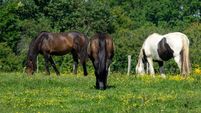Sheep farmers urged to focus on factors under their control
Adopt a three to five-year business plan focussing on the following drivers of profit — amount of grass grown, stocking rate, the number of lambs reared per ewe joined, reducing the amount of meal fed, and improving flock health.
Grow sufficient grass — it’s the cheapest feed — and keep quality leafy grass in front of the flock at all stages.













